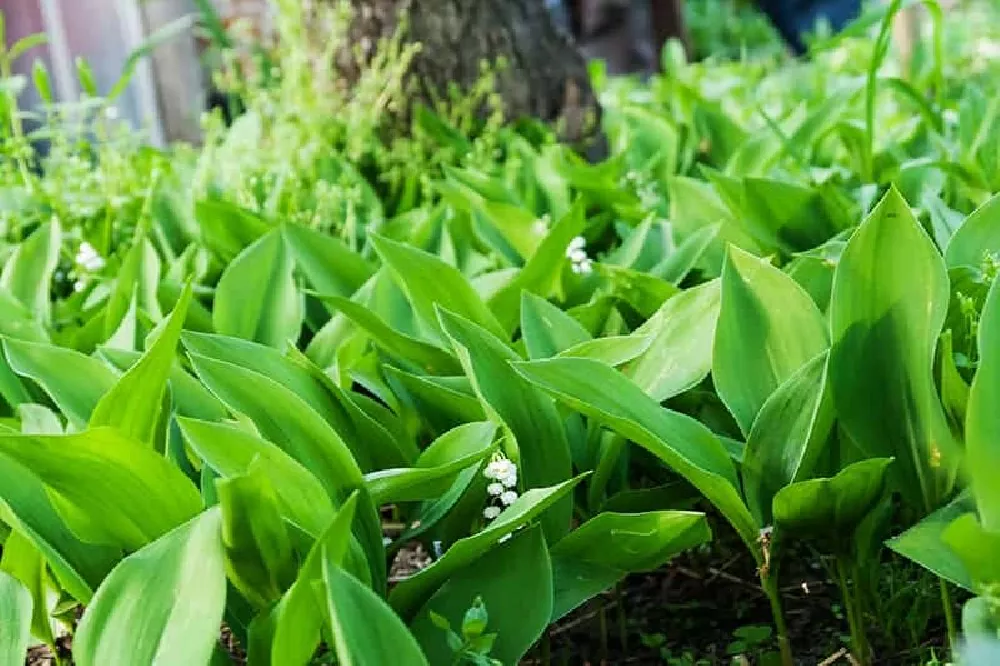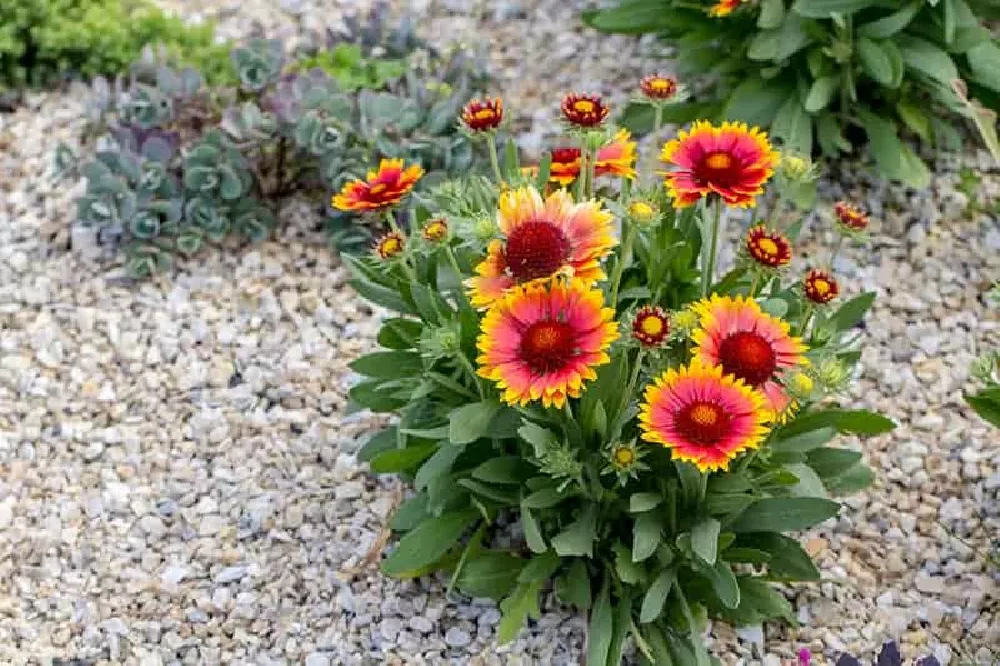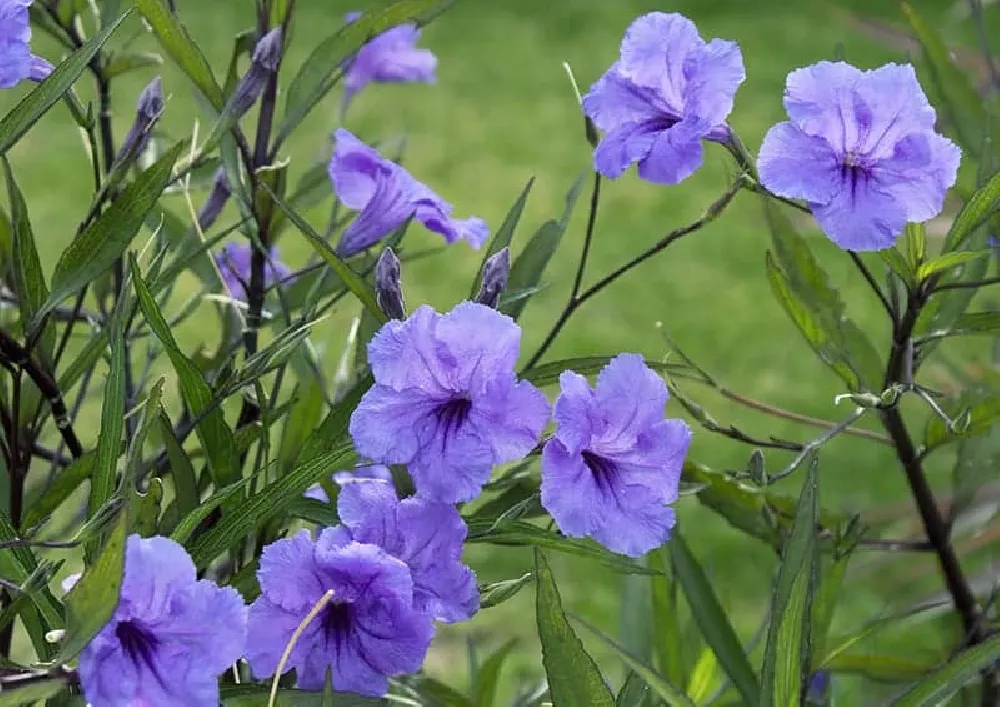- Home >
- Lily of The Valley
Lily of The Valley for Sale - Buying & Growing Guide
Tennessee Wholesale Nursery - 3 ft. - Lily of the Valley
Native Wildflowers Nursery - Lily of the Valley
Direct Gardening - 6-8 inch - White Lily of the Valley
Enter your zip code to find nearby stores that may carry this plant.
Charming, delicate and fragrant, the lily of the valley is a welcome harbinger of spring. This perennial sends out stalks bearing sweet-smelling, tiny white flowers as soon as the weather warms, and can also be coaxed to bloom indoors with little effort. Here are some other noteworthy facts about lilies of the valley:
- Perennials that grow to a height between four and 12 inches high.
- Make an effective ground cover for shady, moist areas where other plants will not survive
- Bloom between early spring and early summer in USDA hardiness zones 3 to 8.
Planting and Care
Planting instructions
Lily of the valley is easy to grow when it is planted in the right location, but it needs a barrier to prevent it from growing out of control. Choose a location where the soil is moist but not waterlogged, if puddles remain in the area a few hours after a rainstorm, choose another spot.
Lily of the valley prefers shade and will do best in a spot where it gets a few hours of morning sun with shade the rest of the day. An area at the base of a tree or under a shrub usually works well, but if placed near other plants it may eventually choke them out. If your plants are in an area where they get more hours of sun, they may require more water.
Lily of the valley does well in rich, well-drained soil such as that found on forest floors, so mix in some compost, peat moss, ground bark or decomposed manure. Once established, the plant spreads aggressively, so plant it within a plastic divider to keep it from encroaching on other plants or a neighbor’s yard. Lily of the valley will also do well in a container as long as it is kept moist and the pot has sufficient drainage.
Lily of the valley should be planted in the fall, as it needs a dormancy period to get established. Plants are usually sold as rhizomes known as “pips.” Pips should be soaked in lukewarm water for a couple of hours before planting to allow them to absorb water. Once they have swelled and hardened, cut the last inch off of their roots and then plant them about four to six inches apart with just half an inch or so of soil above them. Soak the soil after planting to help them settle. Pips can be purchased at different stages of maturity, so keep in mind that it generally takes a pip two years of maturity to produce flowers.
Watering and nutrients
Though Lily of the valley can be grown in areas where it is dry, they do best in moist, well-drained, shaded soil. If you plant them in a sunny dry area they will require frequent watering, though putting a two to three inch layer of mulch or compost around the plants will help. If the weather gets too hot and dry during the summer the leaves will die back, but the plant will return in the spring.
Lilies of the valley do not need to be fertilized unless the soil where they are planted is extremely low in nutrients. Adding organic material to the soil when you are first planting the pips will more than suffice.
Propagation
A healthy Lily of the valley will spread aggressively through its rhizomes, quickly covering the area where you plant it. Sharing plants or adding them to another area in your garden can be done by digging it up and dividing it into separate pieces, then replanting. They can also be grown from the seeds produced in its orange/red berries, but growing from pips will yield flowers much more quickly. If you choose to grow from seeds, keep in mind that because each spreading plant grows from a single rhizome you will need multiple parent plants for fertilization to take place. The seeds need to be removed from ripe berries when they have dried and then planted six inches deep.
Pruning
Lily of the valley plants require no pruning, though you may choose to thin them out if the plants seem to get weaker as they continue to divide. The plants will be healthier if their green leaves are left alone after the blooms have been spent. As the weather turns warmer and the leaves die back, the plant’s rhizomes will gain strength from the greenery.
Pests, diseases, and animals
Lily of the valley is a hardy plant. Its greatest vulnerability comes from the moist soil that it grows in, which can give rise to fungal diseases. To avoid fungus, avoid watering the leaves and only add water to the soil. Fungus can be treated effectively with Neem Oil. The plants are both deer and rabbit-resistant but you may encounter problems with slugs (which can easily be controlled with a saucer of beer).
Light
Lily of the Valley thrives in partial shade. Its natural habitat is under the canopy of trees and larger plants, create dappled shade. When planting Lily of the Valley in your garden, you should aim to recreate this effect by planting it in an area that will offer some protection from the sun, either under a tree or fence.
Though this plant prefers partial shade, it will adapt to almost any lighting condition. If you have dark corners of the garden that you want to brighten up, then this would be an ideal plant, as it will grow in darker areas where many other plants would not survive.
The plant will also adapt to full sun if necessary, though its water requirements will be affected by the amount of light it gets. In full sun, the plant will become even thirstier than usual and need a higher frequency of waterings. In complete shade, the plant will need less water, but it will still need soil to be continually moist.
Temperature
This plant prefers cool climates, and is hardy to temperatures as low as -11 °F. During hot summers, it’s important to give this plant the shade it needs to help keep it cool, especially in the afternoon when temperatures tend to soar. In USDA zones 2-9, the plant will remain perennial, which makes it ideal for use across a broad spectrum of climates.
Lilies of the Valley Varieties
Convallaria majalis ‘Albostriata’
This variety of Lily of the Valley features foliage in a dark green shade. The lanced leaves also have creamy yellow slender stripes running the length of the foliage. This variety doesn’t spread as keenly as other varieties, making it a good option for container gardens or smaller flower beds. While most varieties of Lily of the Valley that feature variegated leaves revert to solid green leaves after a few years, the ‘Albostriata’ typically keeps producing variegated foliage for its whole life (Gardeners World).
Convallaria majalis ‘Rosea’

This variety has pink flowers in place of the usual white ones. It is very pretty but doesn’t flower as profusely as the original white Lily of the Valley, therefore not producing the blanket of flowers the plant is famous for. The flowers of this variety are also not as strongly scented.
Convallaria majalis ‘Prolificans’
This variety of Lily of the Valley has frilly double flowers. It is quite hard to find, with its rarity adding to its increased desirability. This variety also makes excellent cut flowers, as the flowers not only tend to be showier than the original Lily of the Valley, but they last much longer once cut. Typically, Lily of the Valley flowers will only last two or three days once cut, but the ‘Prolificans’ variety should exceed a week in a vase (The Telegraph).
FAQs
Are Lily of the valley plants poisonous?
These plants are extremely dangerous. Children and pets should be kept away from its flowers, its leaves, and its berries. Eating any part of a Lily of the valley can lead to vomiting, diarrhea, and stomach cramps,, and in the worst cases these symptoms can progress to seizures and even heart attacks. Be sure to wash hands thoroughly after coming into contact with any part of it.
Are Lily of the valley in the lily family?
Though the Lily of the valley’s leaves look like some lily plants, they are actually related to the asparagus.
How do you get rid of Lily of the valley that has spread too aggressively?
A Lily of the valley that has not been contained with some type of subsurface barrier can become a problem. To remove it you will need to moisten the soil and then dig out the entire plant, making sure that you do not leave any root material behind. After you have removed the plant, cover the area with plastic or a non-porous material for an entire season to make sure that no remaining pieces survive.












